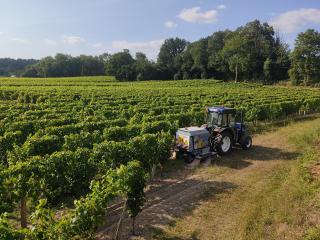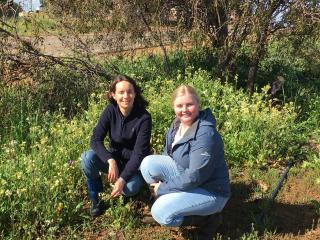Western Australia
March 3, 2022
A non-chemical, weeding device that uses electricity to kill plants will be put through its paces in Western Australia to determine whether it is the future of sustainable weed control for primary industries growers.
The Grains Research Updates 2022 virtual forum was told the high-tech device was due to arrive in the State later in the month.
The Department of Primary Industries and Regional Development, WA (DPIRD) will join with Case New Holland Industrial to test the technology’s suitability to control weeds in Australian dryland and irrigated agriculture.
It will also examine which weeds are easiest to control with electricity and the technology’s potential uses in Australian agriculture to generate cost savings and influence crop yields.
The project also has support from the Grains Research and Development Corporation, Wine Australia, WA consultants AHA Viticulture and the Cotton
Research and Development Corporation.

An example of a Zasso Electroherb electric weed control machine that DPIRD will examine for potential use under Australian conditions.
The Swiss made Zasso Electroherb machine, based on Brazilian technology, uses mechanical power to produce a high voltage current, which is applied directly to plants via a series of electrodes mounted behind or in front of the tractor.
The electroweeding process works by passing electricity through a plant by touching it with an electrical applicator, which causes the cell walls to be destroyed – killing the plant or supressing growth.
The technology has not been tested under Australian field conditions before, although it is used in Europe on a small scale for horticulture and viticulture properties and for roadside weed control.

DPIRD research scientists Dr Catherine Borger (left) and Miranda Slaven are working on a new project examining the potential for electric weed control in Australia.
DPIRD research scientist Miranda Slaven told the forum that electric weed control could be part of an integrated solution to reduce dependence on chemical inputs and create more sustainable farming systems.
“Finding alternative weed control strategies to chemical measures is important in Australia, due to increasing rates of herbicide resistance and increasingly discerning market demands,” she said.
“This new device is at the frontier of agricultural technology, and it is valuable to test it under Australian growing conditions to examine its potential application as a non-chemical methodology in our agronomic systems.”
A preliminary plot trial indicated volunteer crops and grass weeds could be the hardest to control, due to the plants high surface area and extensive branching of roots and shoots.
The device will initially be tested on its ability to control weeds on viticulture and horticulture properties and later along roadsides and fencelines, as well as its use for fallow weed control at the department’s research facilities in the Grainbelt.
The research will target herbicide resistant weeds, like annual ryegrass and wild radish, and problematic agricultural weeds, such as feathertop Rhodes grass and fleabane, as well as perennial weeds, including kikuyu and wireweed.
The machine is on route to Western Australia and will be commissioned before being rolled out in the field in coming months.
Project lead, research scientist Catherine Borger said a literature review and reports from Europe suggested soil health and soil biota were not compromised by the technology.
“Our research will include an analysis of the technology’s effect on soil health, including soil microbial density and diversity, as well as soil root pathogens, such as rhizoctonia,” Dr Borger said.
“We are also particularly interested to ascertain whether there is a potential fire risk during summer so the trials will be undertaken following safety training using the utmost safety procedures.
“A cost-benefit analysis will also be incorporated into the research to determine where this technology can provide economic benefits to the industry in WA.”
The two year electroweeding project findings will be shared with industry.
The virtual Grains Research Update continues on 8 and 10 March. To participate visit the GRDC Updates and events page.